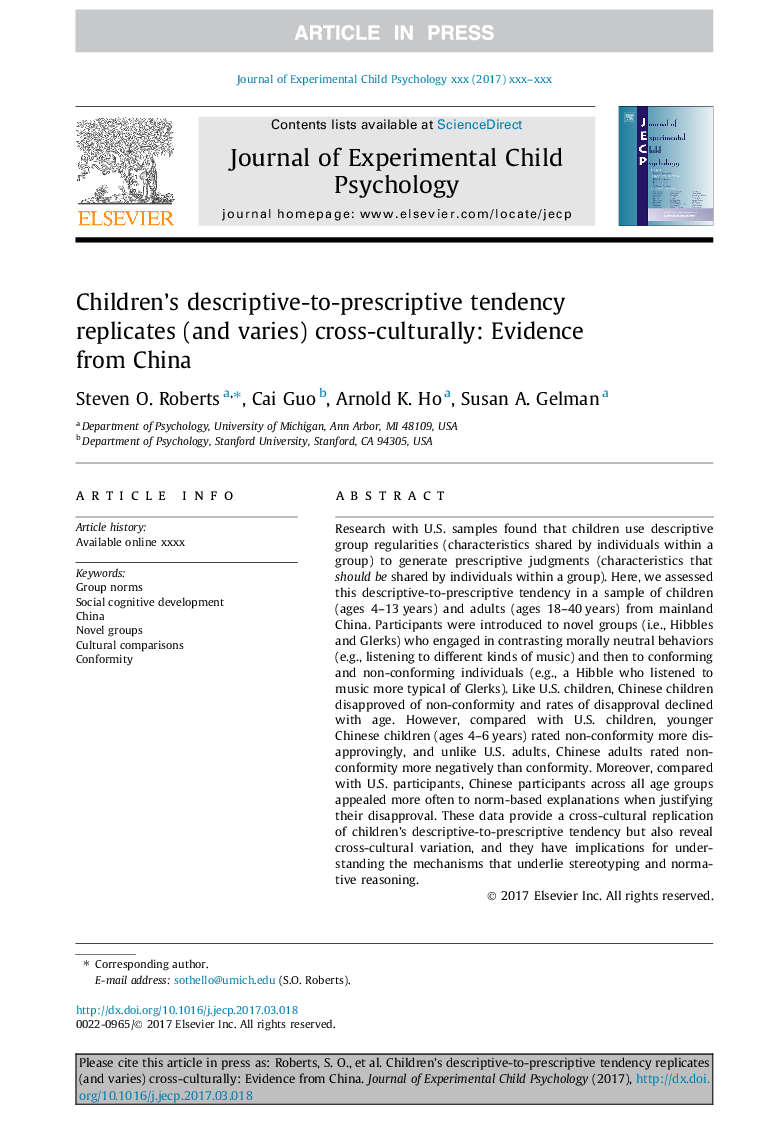| Article ID | Journal | Published Year | Pages | File Type |
|---|---|---|---|---|
| 7274358 | Journal of Experimental Child Psychology | 2018 | 13 Pages |
Abstract
Research with U.S. samples found that children use descriptive group regularities (characteristics shared by individuals within a group) to generate prescriptive judgments (characteristics that should be shared by individuals within a group). Here, we assessed this descriptive-to-prescriptive tendency in a sample of children (ages 4-13Â years) and adults (ages 18-40Â years) from mainland China. Participants were introduced to novel groups (i.e., Hibbles and Glerks) who engaged in contrasting morally neutral behaviors (e.g., listening to different kinds of music) and then to conforming and non-conforming individuals (e.g., a Hibble who listened to music more typical of Glerks). Like U.S. children, Chinese children disapproved of non-conformity and rates of disapproval declined with age. However, compared with U.S. children, younger Chinese children (ages 4-6Â years) rated non-conformity more disapprovingly, and unlike U.S. adults, Chinese adults rated non-conformity more negatively than conformity. Moreover, compared with U.S. participants, Chinese participants across all age groups appealed more often to norm-based explanations when justifying their disapproval. These data provide a cross-cultural replication of children's descriptive-to-prescriptive tendency but also reveal cross-cultural variation, and they have implications for understanding the mechanisms that underlie stereotyping and normative reasoning.
Related Topics
Social Sciences and Humanities
Psychology
Developmental and Educational Psychology
Authors
Steven O. Roberts, Cai Guo, Arnold K. Ho, Susan A. Gelman,
